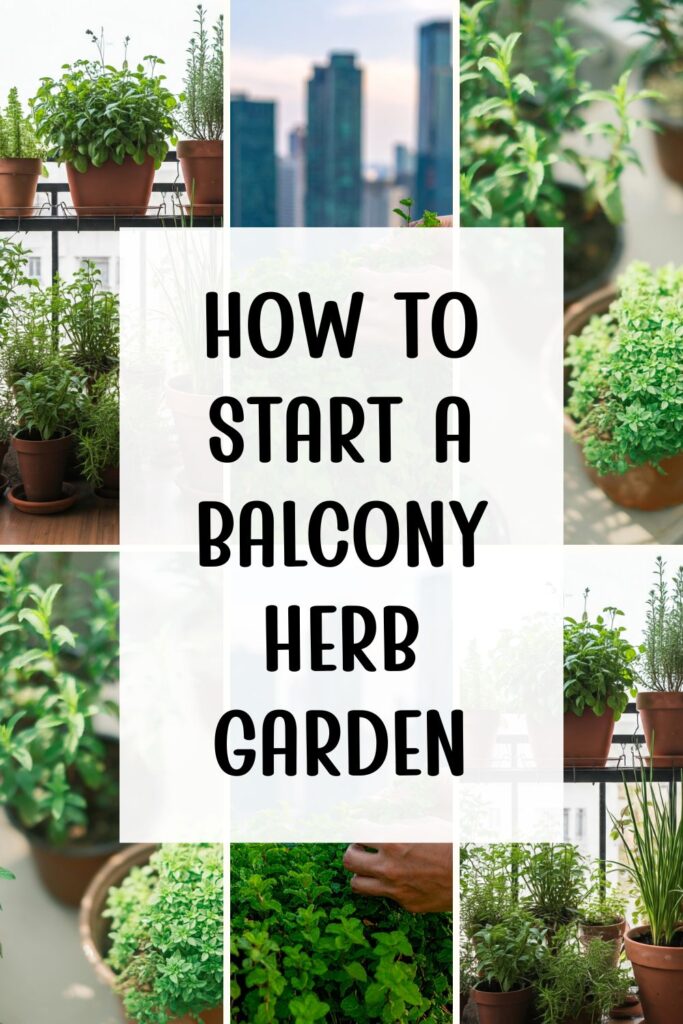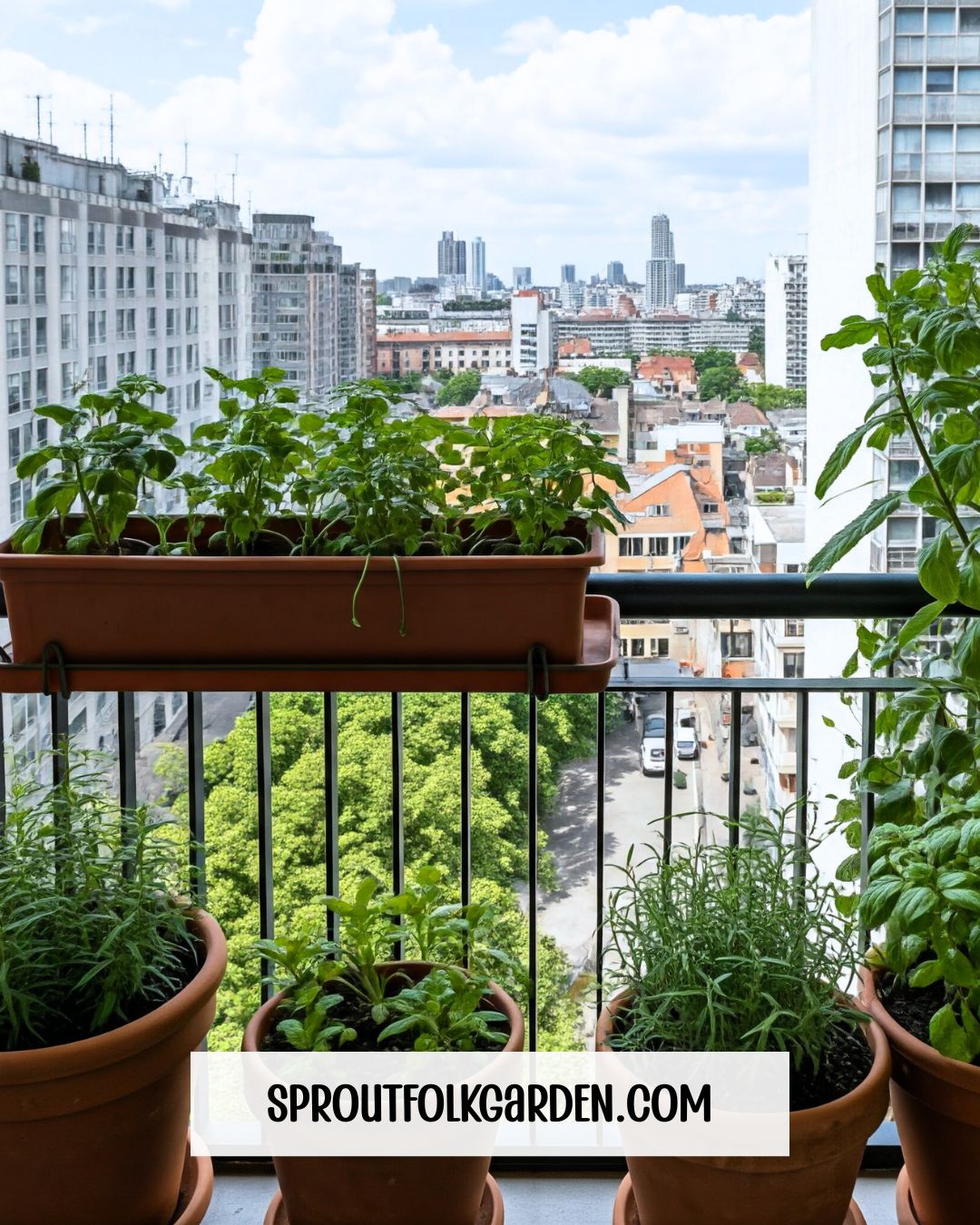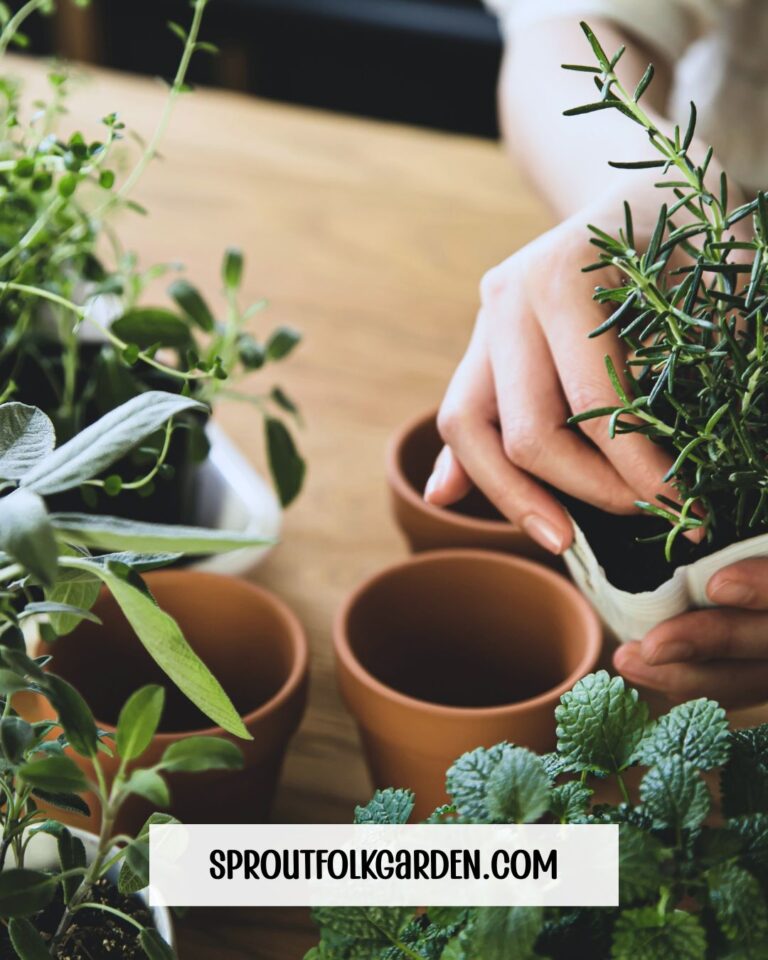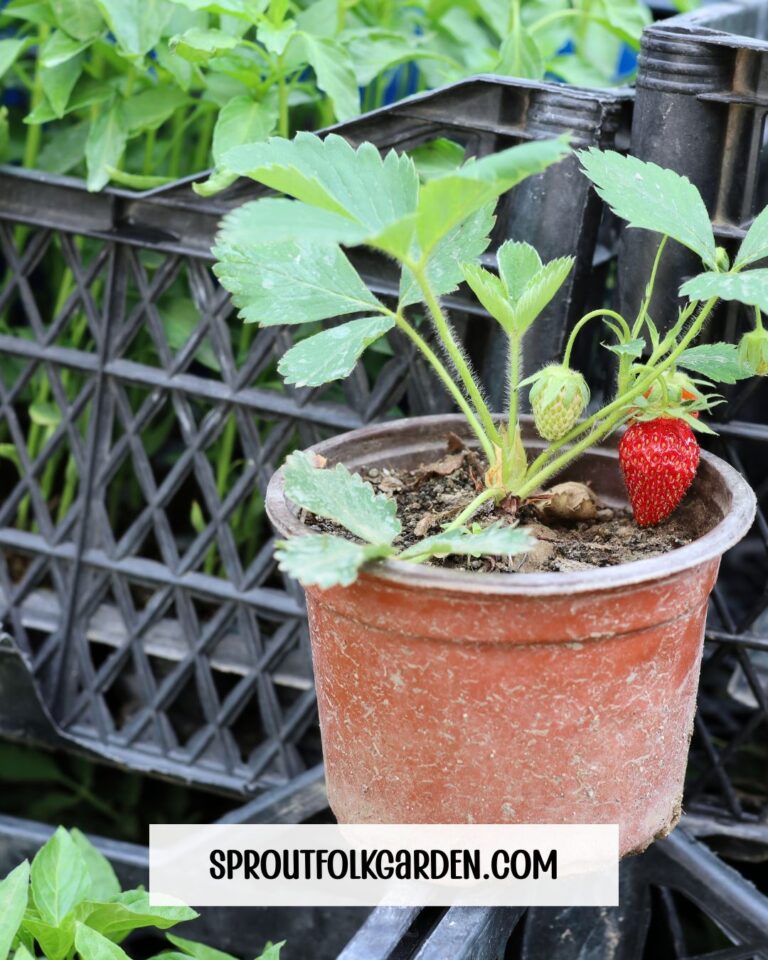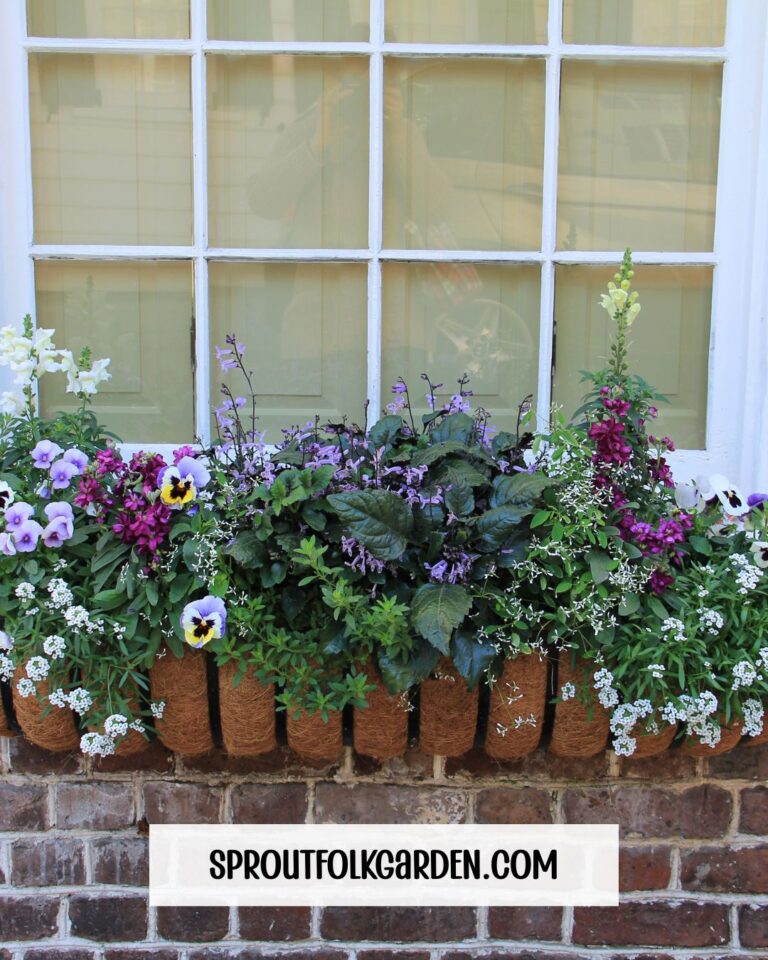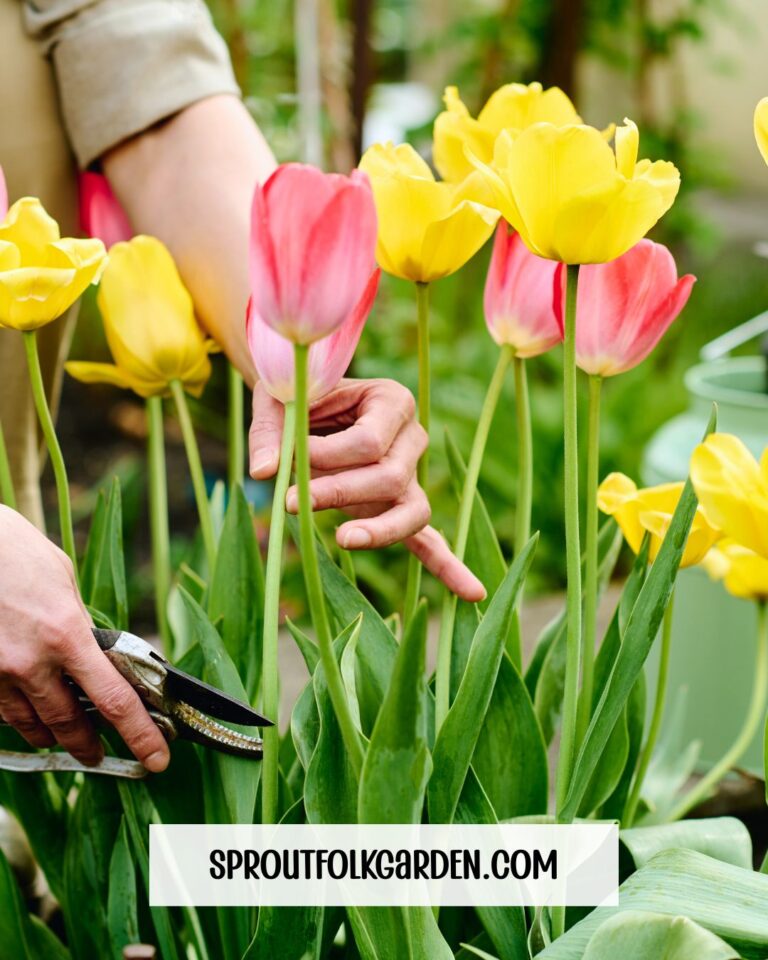Balcony Herb Gardens: How to Turn Your Outdoor Space into a Flavorful Oasis
Last Updated on October 6, 2025 by Sprout Folk Garden
If you’ve ever dreamed of stepping outside and snipping a few sprigs of fresh herbs for dinner, you don’t need a sprawling backyard or fancy greenhouse to make it happen. A balcony herb garden is one of the easiest (and prettiest) ways to bring fresh flavor and greenery into your everyday life. Whether you have a tiny apartment balcony or a cozy patio, you can create a lush, fragrant herb haven that fits your space and your lifestyle.
Balcony herb gardens are practical, beautiful, and surprisingly low-maintenance. With a bit of sunlight, the right containers, and a smart layout, you’ll be enjoying homegrown basil, mint, thyme, and more before you know it. Here’s exactly how to get started.
Save to Pinterest
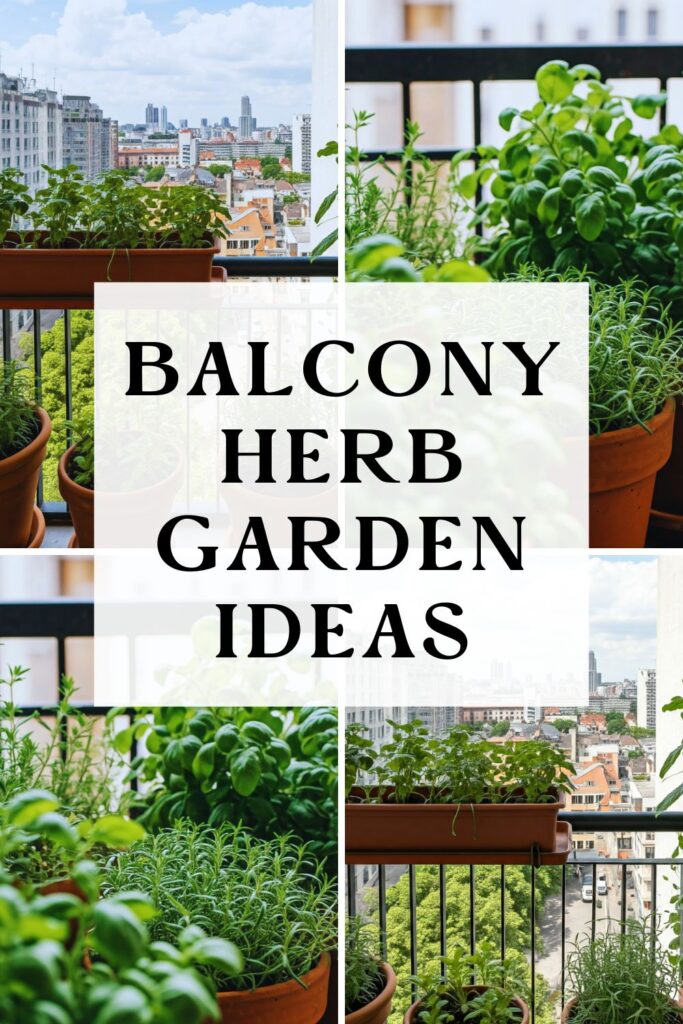
Affiliate links are used on this website, and I will receive a commission at no additional cost if you purchase through my links. I’m also part of the Amazon Affiliate (Associate) program, where I earn a commission from sales made through my affiliate links. Read the full disclosure & privacy policy.
01. Assess Your Space and Light
Before you pick up a single pot, take a moment to observe your balcony. Notice how much sun it gets throughout the day. Most herbs thrive with at least 4–6 hours of direct sunlight, so a south- or west-facing balcony is ideal.
If your balcony gets partial shade, don’t worry—you can still grow plenty of herbs. Parsley, chives, mint, and cilantro all handle less intense light beautifully. For shadier balconies, try setting up reflective surfaces like light-colored walls, mirrors, or even white planters to bounce extra light onto your plants.
Bonus Tip: Watch your balcony at different times of the day for a few days. The sun may hit certain areas more than others, and that can help you decide where to place your herbs for maximum growth.
02. Choose the Right Herbs for Your Balcony
One of the best things about herb gardening is how customizable it is. You can pick herbs based on what you love to cook with, their light requirements, or even just their scent and appearance.
Some balcony-friendly herbs include:
- Basil – Loves warm weather and full sun. Perfect for summer dishes.
- Mint – Fast-growing and thrives in partial sun. Keep it in its own container to prevent spreading.
- Thyme – Compact, fragrant, and easy to maintain.
- Rosemary – Hardy and aromatic, great for sunny spots.
- Chives – Adaptable and ideal for balconies with less intense sunlight.
- Oregano – Loves warmth and does well in containers.
Start with three to five herbs you use often. It’s better to grow a handful of plants you’ll actually cook with than to overcrowd your space with too many at once.
03. Pick Containers That Fit Your Style and Space
Balcony gardens often have limited square footage, so container choice matters. Look for pots with good drainage—herbs don’t like soggy roots. Terracotta pots are classic, but lightweight plastic or metal containers can work well, especially if you’re concerned about weight on an upper-level balcony.
Consider these container options:
- Rail planters that hook over balcony railings to save floor space.
- Tiered stands or shelves to create vertical gardens and maximize sunlight exposure.
- Hanging planters for trailing herbs like thyme or oregano.
- Individual pots for each herb, making it easy to move them around as light conditions change.
Bonus Tip: Make sure you have saucers or trays to catch excess water, especially if you have neighbors below.
04. Use the Right Soil and Drainage
A successful balcony herb garden starts with healthy roots. Choose a high-quality potting mix rather than garden soil—it’s lighter, drains well, and supports container growth. Adding a little perlite or coarse sand can improve drainage further, which helps prevent root rot.
When potting your herbs, gently loosen their roots before placing them in the containers. Leave about an inch of space at the top for watering. After planting, give them a good drink and allow the excess water to drain completely.
05. Watering and Feeding Your Balcony Herbs
Balcony gardens often dry out faster than indoor gardens, especially in warm, breezy weather. Check your herbs daily by sticking your finger about an inch into the soil. If it’s dry, it’s time to water.
Water thoroughly until it drains from the bottom, then empty any saucers so the roots don’t sit in water. During hot summer months, some herbs—like basil—may need daily watering, while tougher herbs like rosemary can go a bit longer between drinks.
Every 4–6 weeks, give your herbs a light feeding with a diluted, all-purpose liquid fertilizer to replenish nutrients. Too much fertilizer can reduce flavor intensity, so keep it minimal.
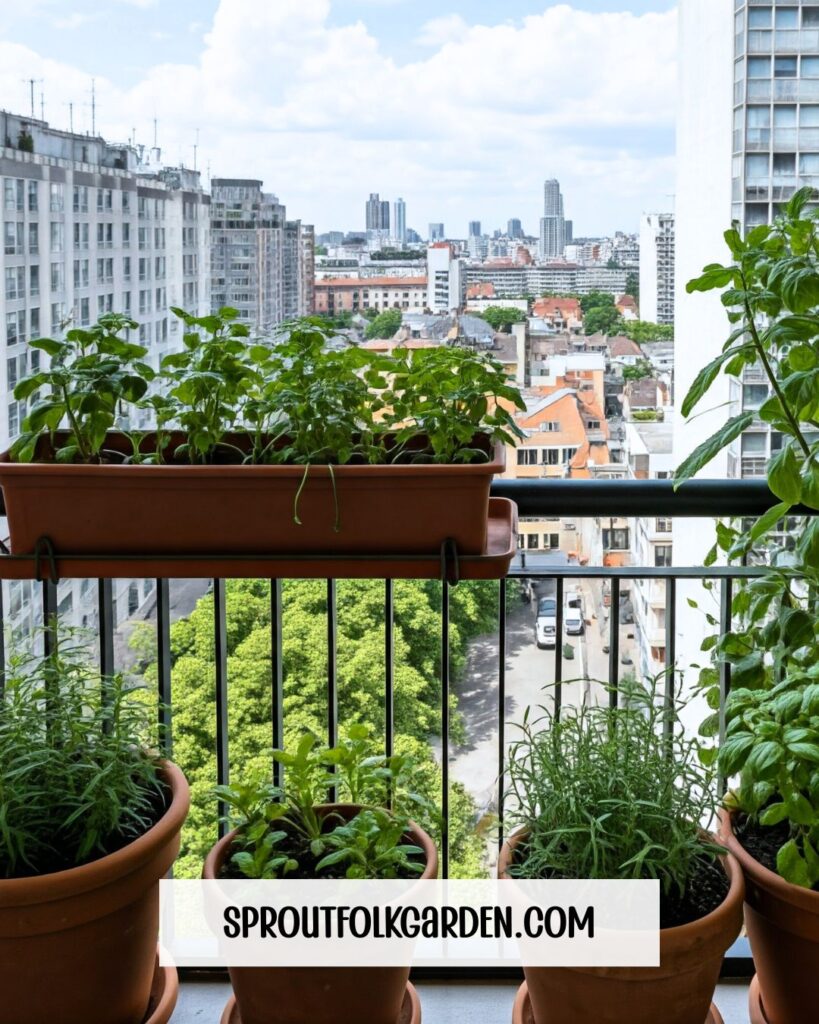
06. Harvest Often for Healthier Plants
The beauty of balcony herb gardens is that you can harvest as you go. Regular trimming encourages herbs to grow bushier and healthier.
- For basil, pinch off the top leaves to promote branching.
- For chives, cut the leaves down to about an inch from the soil.
- For woody herbs like rosemary or thyme, snip sprigs as needed but avoid taking more than a third of the plant at once.
Morning is the best time to harvest herbs when their essential oils are strongest.
07. Style Your Balcony Like a Mini Garden Retreat
Your balcony herb garden doesn’t just have to be functional—it can be a beautiful, inviting space, too. Add a small bistro table and chair so you can sip your morning coffee surrounded by greenery. Mix in a few flowering plants or decorative lanterns to make it feel like a cozy retreat.
You can even group herbs by color and texture for a layered look—think tall rosemary in the back, cascading thyme in the front, and bright basil in between. Not only will it look stunning, but it’ll also make harvesting easier.
Final Thoughts
Creating a balcony herb garden is one of the most rewarding ways to make the most of your outdoor space. With just a few pots, some sunlight, and regular care, you can grow fresh herbs right outside your door.
It’s a simple upgrade that adds flavor to your cooking, greenery to your home, and a touch of everyday joy to your routine. Whether you’re working with a spacious terrace or a tiny apartment balcony, these tips will help you grow a thriving herb garden you’ll love all season long.
